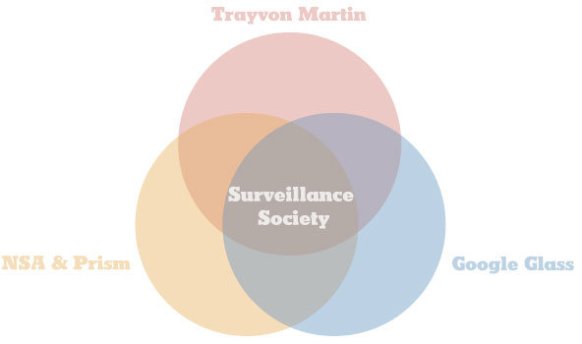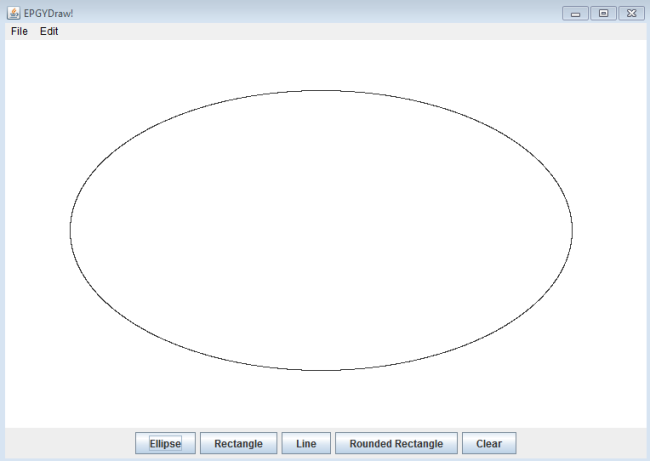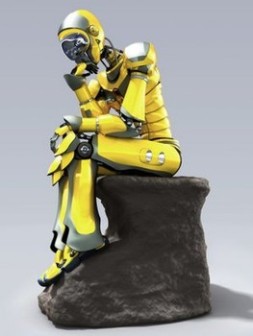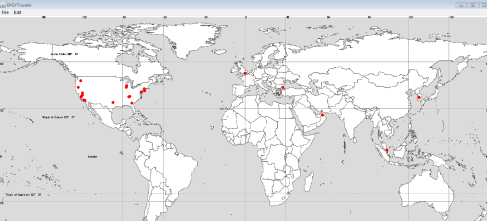The IEEE Big Data Conference will meet in Santa Clara Hyatt in California from October 6-9, 2013. Their topics include big data mining, searches, security, and several others (for more, see: http://www.ischool.drexel.edu/bigdata/bigdata2013/topics.htm). I am interested in the International Workshop on Intelligent Agents for Big Data. This workshop will correlates with my current project in analyzing large amounts of data to make a computer bot capable of learning from its experiences. Overall, this conference addresses my interests in databases and artificial intelligence.
rahulmadanahalli
Dream, Formulate, Execute
Author Archives: rahulmadanahalli
kNN Classifier tackles Big Data
Today I created a kNN (k-Nearest Neighbor) classifier, which classifies instances based on their similarity to instances in the training data. For instance, we were given data points with three dimensional coordinates and each data could have a label of a one or a zero. Given more data points, my job was to label them with a one or zero. Since the one labels clustered with each other and the zeros clustered with each other, I made a method which checked the “k” closest data points (k being a constant) to the unlabeled data point. I used the 3-D distance algorithm and a bubble sorting algorithm to find the closest points. The unlabeled data point then inherited the majority label value of the “k” closest points.
The kNN classifier is a type of data mining tool that tackles the conundrum of Big Data!
What is artificial intelligence?
Artificial intelligence is essentially Machine Thinking. It is a concept where machines, instead of being slaves of their human masters, will begin to coexist with humans as intelligent beings. Machines will not only be able to make an apt assessment of their environment, but also manipulate their environment according to their needs. Artificial intelligence is primarily making machines inherit human capabilities.
The conundrum for programmers is trying to get the computer to learn the proper strategies and correct moves. We don’t want to use an algorithm that just spoon-feeds the AI bot with the right answer easily. There has to be a balance of autonomy and guidance that us programmers have to give to our creations. Therefore, the AI bot will be flexible and perpetually improving.
EPGYTraveler
I created an algorithm to find the shortest path to go through all the points on a map. The points on the map were the hometowns of the students in our class. I used a recursive method to create a brute force algorithm, where I found all the possible paths that one could take through all the points and collected the distances of the paths. I then parsed through these distances to find the shortest one! The algorithm is still under revision, but in theory, it works! It was intriguing to see how students at EPGY are from everywhere around the world.
The Future of the Surveillance Society
 The NSA could provide a comprehensive insight on events across the country and can provide justice for the citizens. Yet, this power can abuse the people’s rights to privacy. Giving an organization an unknown amount of agency is a horrifying reality. Therefore, I believe we should entrust the surveillance society with an artificially intelligent system of bots that will be autonomous and extract only necessary information. In the end, an amount of privacy must be sacrificed to ensure justice across the country. The bots’ functions will be broadcasted publicly so that the citizens are aware of the good intentions of NSA.
The NSA could provide a comprehensive insight on events across the country and can provide justice for the citizens. Yet, this power can abuse the people’s rights to privacy. Giving an organization an unknown amount of agency is a horrifying reality. Therefore, I believe we should entrust the surveillance society with an artificially intelligent system of bots that will be autonomous and extract only necessary information. In the end, an amount of privacy must be sacrificed to ensure justice across the country. The bots’ functions will be broadcasted publicly so that the citizens are aware of the good intentions of NSA.
Lisp Computer Programming
The code below shows common functions executed through lisp, a declarative programming language. One reason that Lisp is used for Artificial Intelligence is that it is an excellent prototyping tool. Also, Lisp supports symbolic programming well. Old AI was also symbolic. In addition, the code/data distinction in lisp is weaker so it feels more extensible than other languages because your functions and macros look like the built-in stuff (Stack Overflow).
(write-line “Hello World”)
(defun add (X Y)
“Compute three times X.”
(+ Y X))
(print (add 3 3)) ; Display that function with 4 as a param
(defun subtract (X Y)
“Compute three times X.”
(- X Y))
(print (subtract 4 3)) ; Display that function with 4 as a param
(defun multiplication (X Y)
“Compute three times X.”
(* X Y))
(print (multiplication 3 3)) ; Display that function with 4 as a param
(defun factorial (n)
(if (<= n 1)
1 ; returns 1 once you go through all the numbers
;hidden else statement here
(* n (factorial (- n 1)))))
(print (factorial 5))
Engineer, Artist, Scientist, Educator – Who am I? Where am I headed?
I’m not bounded by these labels of engineer, artist, scientist, and educator, yet my qualities make me more like some of the above than the others. My inability to sit still without wanting to help people around me and learn from what others are doing makes me a dynamic person with a focus on optimization. My bent towards examples and products rather than theory (though theory is quite intriguing) makes me a suitable engineer. In my local area, I have volunteered and worked at corporations to ameliorate the familiar world around me. I hope to expand this altruism by following my passion in computers, math, and sciences to make a global impact.
Project Proposal
What is the specific area you are working within?
I am working with many implementations of decision trees, such as markov chains and random forests. I will also work with reactive planning and case-based artificial intelligence.
What is it that you would like to learn about it?
I would like to learn how to use MySQL databases achieve case-based AI, so that the computer player can actually learn from his experience. I also want to create a player that follows multiple playing styles and not follow a strict decision tree.
Why is this interesting to you?
It is very interesting because I really want machines to act like humans and gain experience as they play!
Why should other people care?
Because the game to which I’m applying these artificial intelligence algorithms is highly intellectual.
What are the practical applications of this topic?
We can be one step closer to making machines “think” like humans.
What is the closest example (researched from the web) of what you want to build or investigate?
It is called Ultimate Tic Tac Toe, where there is a 3×3 Tic Tac Toe game and each square has its own 3×3 Tic Tac Toe game in it.
What do I want to accomplish?
I want to create a Java application of Ultimate Tic Tac Toe that will allow one player to play with an artificially intelligent computer player.
Obstacles
I’m going to need a little guidance in how to utilize data from my databases to allow the computer to learn from its past opponents and its previous mistakes.
What tools am I using
MySQL databases, Eclipse and maybe VSphere Client and an ESXi license
EPGY Draw
In this project, we created an drawing canvas program that can draw multiple shapes on a drawing board using Graphics. I was very interested in figuring out how to create an ellipse once the mouse goes to the left or above the initial starting position of the shape, so I created an algorithm for that.





